Common reasons for calathea yellow leaves are overwatering, too much or too little light, underwatering, extreme temperatures, nutritional deficiency, and too much fertilizer. However, it may occur due to pests and disease, low humidity, or issues with your water quality.
Depending on the cause, your calathea may have yellow spots, tips, margins, or the entire leaf may turn yellow. Also, it may occur with other symptoms like browning, curling, drooping or wilting, and so on.
If your calathea leaves have turned yellow or any other color, fixing the cause will not make the leaves turn to their original color. So, you can prune the damaged area or cut the whole leaf if the damage is severe.
Lastly, what we will give you applies to various calathea species, varieties, or cultivars, including Calathea leopardina (Freddie), ornata, zebrina, musaica, Freddie, lancifolia (rattlesnake plant), orbifolia, or rufibarba.
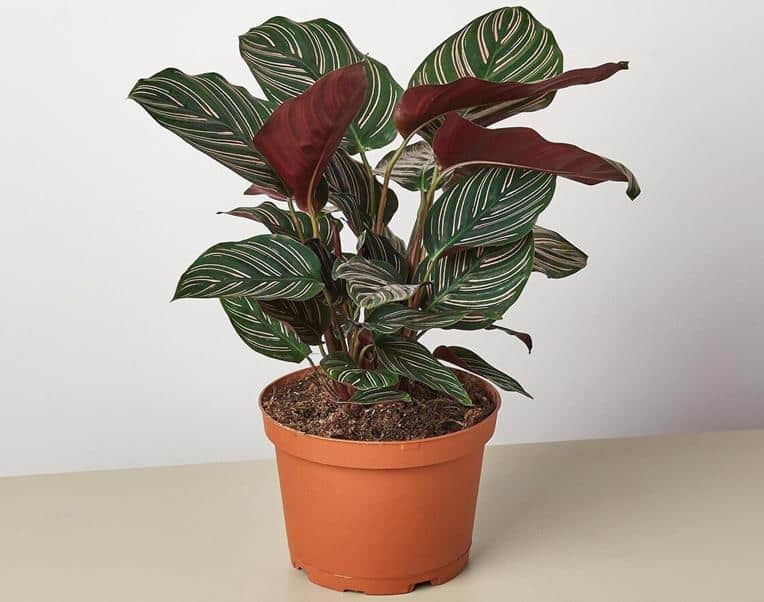
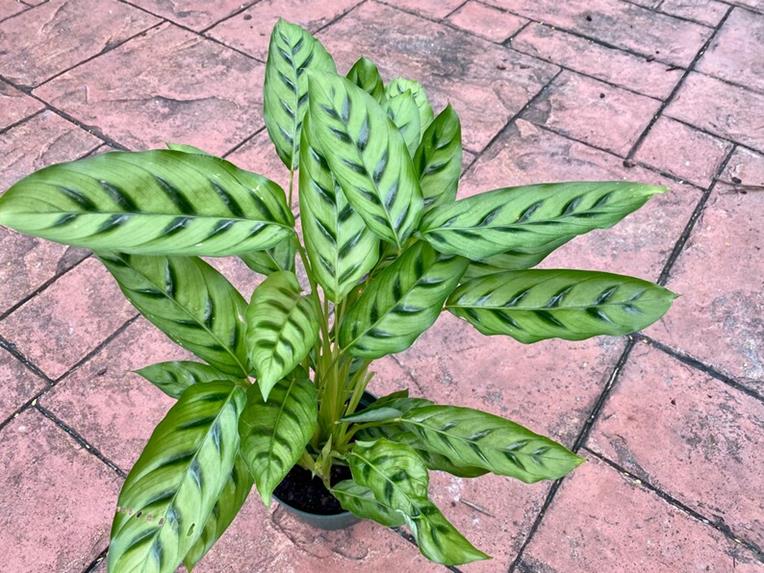
Contents
- Calathea care and growth requirements
- Why arecalathea leaves turning yellow?
- 1. Watering and water issues
- a. Overwatering and calathea leaves turning yellow
- b. Underwatering
- c. Water quality
- d. How to water your calathea
- 2. Does light issues cause calathea yellow leaves?
- a). Too little light
- b). Direct sunlight
- c). Solution
- 3. Extreme temperatures and calathea yellow leaves
- a. Low temperature and cold drafts
- b. Heat stress
- c. Solution
- 4. Nutritional deficiencies and overfeeding
- a. Nutritional deficiencies
- b. Overfeeding
- c). Solution
- 5. Low humidity and solution
- 6. Pests
- 7. Diseases
- 8. Rootbound or compacted roots
- Normal reasons for calathea yellowing leaves
- 1. Aging
- 2. Acclimation and transplant shock
- About Calatheas
- FAQs
Calathea care and growth requirements
Many a time, calathea yellow leaves happen due to environmental stress occasioned by improper care and wrong growing conditions. So, we felt it worthwhile giving you some of the primary calathea care and growth requirements.
| Care level | Low or easy care |
| USDA hardiness zone | 11 to 12 |
| Temperature | They prefer warm temperatures, ranging from 65°F to 80°F (18°C to 27°C). |
| Humidity | Medium to high humidity, with a good value being 50% or more |
| Light requirement | Bright, indirect light |
| Best soil | Nutrient-rich, well-drained, and aerated slightly acidic soils, pH about 6.5 |
| Watering | Moderate. Water when top ¼ of the soil feels dry. Usually, it will be once a week, but this will depend on your conditions and other factors. |
| Fertilizer | Use a balanced, like a 10-10-10 fertilizer for houseplants to feed these plants once a month during the growing season only. |
| Pruning and grooming | Remove dead, damaged, or diseased leaves with a sterilized pruning knife and wipe dusty leaves with a soft damp piece of cloth. You can cut a few branches to control growth, shape and encourage them to be fuller in spring and summer. |
| Repotting | Repot these plants once every 2 to 3 years or if they rootbound |
| Propagation | Plant division |
| Toxicity | Calatheas are safe for humans, cats, dogs, and other pets |
Why arecalathea leaves turning yellow?
Calathea leaves turning yellow or chlorosis is a sign that they cannot make enough chlorophyll, the green pigment. But it may also occur if there is some degradation.
Nutrients including minerals, water, light, and optimum temperature are all essential in chlorophyll synthesis. Also, pests and diseases can affect its content.
Let us now look at the causes of calathea yellow leaves, signs, and solutions or fixes.
1. Watering and water issues
Overwatering, underwatering, and your water quality are possible reasons for calatheas yellow leaves.
a. Overwatering and calathea leaves turning yellow
Do you always have soggy soil, and the lower leaves of your calatheas are turning yellow? You are likely overwatering your plant.
Soggy or wet soil will deprive oxygen off roots. This will weaken them and make it hard for them to absorb water or nutrients. If you don’t fix the issue, root rot will set in, worsening things.
More overwatered calathea signs are wilting or drooping, but the leaves will remain soft and not dry or crispy, brown or black splotches and leaves curling or dropping. Also, the base of the stem will be mushy, potting mix moldy, among others.
b. Underwatering
A dry pulled soil, your calathea leaves curling upward or in, some yellowing, and crispy, brown tips and margin indicate this plant is thirsty. Other signs are drooping, slow growth, leaves falling, withering, and death.
When they don’t get water, they can’t absorb minerals essential for chlorophyll manufacture. Also, dehydration favors the decomposition of chlorophyll. (1)
c. Water quality
Accumulation of chlorine, fluoride, salts and some metal ions in your potting mix from the water you use may result in leaf burn, yellowing, or even curling leaves.
d. How to water your calathea
These plants love moist soil, i.e., not soggy or too dry. Thus, only water your calathea when the top ¼ of the potting mix is dry. This may be after a week in the growing season and after 2-3 weeks in winter or fall. But the exact time will depend on your environmental conditions, plant size, pot size, or type.
Please don’t have a watering schedule. A watering program is the main reason why people use overwater or underwater houseplants.
Instead, water when the potting mix feels dry up to the first knuckle of your finger. Alternatively, you can use a soil moisture meter or sensor. We use XLUX (best-rated on Amazon.com). However, other brands like Sonkir and Gouevn are also good.
If you have underwatered this plant, give it a good drink, i.e., allow slowly saturate the soil until excess water flows from drainage holes. Next, discard any that collects on cachepots or saucers.
Is overwatering the problem? Hold the watering until the top 25% of the soil dries. Also, poke the potting mix with a pencil to improve aeration.
To avoid overwatering issues, have the right soil mix (we use Miracle-Gro Indoor Potting Mix), i.e., well-drained. Also, make sure you have the right pot size (too large will cause overwatering, and too little the soil will dry fast). Also, always check if drainage holes are open and maintain optimum growing conditions.
If you forget to water, we suggest you get an estimate of the number of days your plant takes to need water and set a reminder.
Last but not least, switch from tap water to either rainwater or filtered water. These plants may be contaminants in tap water.
2. Does light issues cause calathea yellow leaves?
Light is essential for chlorophyll formation not in calathea but in all flowering plants. But too much isn’t good either.
a). Too little light
If you place your calathea in a dark place or don’t get enough light, it will have yellow leaves. Also, your plant will have smaller leaves, look leggy, grow slowly or towards a light source.
That is not all, the variegations won’t have proper coloration, and it may drop leaves if you don’t fix the issue.
b). Direct sunlight
Direct sunlight will degrade chlorophyll and increase water loss from leaves. Thus, leaves will turn yellowish or pale and look faded or washed out. Leaves may also droop, curl or have a burnt look – crispy brown edges and tips.
c). Solution
Keep your plant in a place with bright, indirect light. Also, avoid placing these plants too close to windows where direct sunlight will hit them. If grown outside, put them under a shade or have shade cloth or greenhouse.
People who live in poorly lit room should buy grow lights or move to rooms with more light.
I have used Relassy 15000Lux Sunlike Full Spectrum Grow Lamp for some time now, and I can attest that it is a great brand. It has a lifespan of up to 50,000 hours and provides optimum light between 10,000 and 20,000 lux. This range is the equivalent of bright, indirect light.
3. Extreme temperatures and calathea yellow leaves
Temperature influences some plant functions like photosynthesis, transpiration (water loss), and chlorophyll biosynthesis. Thus, the calathea leaves yellowing, among other symptoms.
a. Low temperature and cold drafts
Drafty winters and chilling temperatures will inhibit or reduce chlorophyll and water absorption. These two will affect chlorophyll formation and may make your plant leaves turn yellow. Also, a freezing environment may freeze the plant, damaging its cells.
Signs you will see include drooping or wilting, leaf scorch, and leaf discoloration, i.e., leaves will turn yellow, black, brown, whitish, or even turn brown overnight.
b. Heat stress
Heat stress or high temperature will cause leaf burn (dry brown margins and tips), leaf curling, yellowing, wilting, drooping, leaf drop, and stunted growth. Why? It affects normal plant function, including chlorophyll, and too high will cause a degradation of the same.
c. Solution
Maintain an optimum temperature of 65°F to 80°F (18°C to 27°C). And make sure they don’t dog below 50°F (10°C) or above 90°F (32°C).
Invest in a thermometer. Most work as hygrometers too and our favorite is Govee Hygrometer Thermometer H5075. It has a smartphone app to help monitor temperature remotely and can give you alerts when temperatures exceed the range you set. Also, it stores data for up to two years.
Next, move plants from draft areas (doorways, open windows, patio entrances, etc.) or outside during winter. Also, in hot summers, take your plants to a shade or cooler place.
4. Nutritional deficiencies and overfeeding
These houseplants need feeding. But it would help if you didn’t overdo it or let them suffer from nutritional deficiencies. These two will cause chlorosis.
a. Nutritional deficiencies
Some minerals like iron, nitrogen, magnesium, zinc, manganese, or molybdenum make part or participate in chlorophyll formation. A lack will cause calathea chlorosis.
That is not all. Other minerals like sodium, potassium, phosphorous, etc., have a role in proper plant functioning. So, their deficiency may contribute to leaves yellowing.
Depending on the deficient mineral, you may see yellowing starting with younger or older leaves. Also, there may be in-between veins yellowing. For others, the yellowing may begin from the leaf center and spread outwards or vice versa.
b. Overfeeding
Too much fertilizer will result in salts deposits accumulation, may burn roots, or change soil pH. All these factors will contribute to the yellowing of leaves. How? They affect water and mineral absorption.
Signs to expect are fertilizer burns and the presence of fertilizer crusts on the soil. Additionally, your plant will grow slowly, have drooping leaves, lose leaves, etc.
c). Solution
Feed your calatheas monthly using a balanced fertilizer for houseplants during the growing seasons only. A 10-10-10 or 20-20-20 is ok. Also, we recommend getting liquid plant food. But this isn’t a must.
We biweekly use ½ a teaspoon of Jacks Classic 20-20-20 All Purpose Fertilizer in a gallon of water. We love it because it has other nutrients and trace elements like manganese, zinc, copper, iron, boron, and zinc.
If you have overfed your plant, you can remove the top potting mix with fertilizer crust. Remove no more than ¼ an inch.
Next, flush or leach the soil. You will do this by letting a lot of water go through your potting mix. It will wash some fertilizers away.
5. Low humidity and solution
Low humidity has a net effect on a thirsty plant. Dry air will strip away moisture, causing symptoms similar to those of an underwatered calathea, yellowing being one of them. But the soil may not necessarily be dry.
Calatheas need humidity of at least 50% or more. To fix this issue, begin by getting an accurate digital hygrometer. This is the only way to be sure you have low humidity. If it is indeed, do the following:
- Mist your plants a few times a week.
- Have a pebble tray
- Buy a humidifier like LEVOIT, Aquaosis or Pure Enrichment® MistAire
- Group your plants to help create a microclimate.
- The other way is to move this houseplant to your bathroom, kitchen, or any room with high humidity. If not sure, test.
6. Pests
Does your plant have pests like spider mites, mealybugs, thrips, aphids, scale insects, etc.? They may be the cause of calathea yellow spots. Why? Because they damage plant cells and may cause a reduction of chlorophyll on the sites they attack. Some will even inject toxins into plants.
You will see these tiny bugs, and your plant may have black, brown, or yellow spots. Also, leaves may look distorted and ruffled. Other signs are honeydew, sooty mold, silvery stippling, etc. The exact ones depend on the pest your plant has.
Start by hosing your plant in your sink. This will knock some of the bugs off your plant. Also, you can wipe them with cotton buds dipped in rubbing alcohol, use neem oil, insecticidal soaps, or horticultural oil sprays.
The 3-in-1 Bonide Ready to Use Neem Oil will help you kill insects and mites.
Last but not least, don’t forget to isolate new or infested plants. Doing so will help you contain the spread of these bugs.
7. Diseases
Fungal, bacterial, or viral diseases may cause leaf yellowing or yellow spots. For instance, leaf-spot disease or fusarium may cause dark or brown spots with a yellow hallo. Others like Bipolaris cactivora will also cause yellow lesions. Later, they will turn brown.
Treatment may involve using a fungicide for fungal diseases, and for bacterial ones, you will use antibiotics. Viral infections are incurable, and some require you safely discard the plant.
8. Rootbound or compacted roots
Although you need to transplant calatheas after 2 to 3 years, you may sometimes see some yellowing of lower leaves and roots growing from drainage holes. This is a sign that your houseplant is rootbound.
You need to repot your plant if it is during the growing season. If not, wait until early spring. When repotting, pick a pot large enough to accommodate the root ball.
Normal reasons for calathea yellowing leaves
At times, some yellowing is expected or is bound to happen. Thus, you shouldn’t worry much if you see some discoloration in case of the following:
1. Aging
As plants age or during plant senescence, there will be degradation of chlorophyll. This degradation will make your calathea leaves turn yellow and occur to a few lower leaves at a time. Later they will turn brown, look curly, and die.
2. Acclimation and transplant shock
Repotted, transplanted, relocated, or new plants may have yellow leaves. The yellowing occurs because the plants have not acclimated or there is transplant shock. Other possible signs are wilting, leaf burns, curling, and falling leaves.
Provide optimum conditions and ensure the potting mix remains moist but not soggy. After a few days to weeks, your plant will recover.
About Calatheas
Calathea is a genus with around 60 adorable plant species native to tropical America, predominantly Brazil. They are a member of the arrowroot family Marantaceae or the so-called prayer plants. But the word prayer plant usually means those in the genus Maranta.
The charming broad to elliptical variegated leaves (orange, white, pink, red, etc.) with a purplish underside make them great pot plants. Some, like Calathea crocata, also have beautiful inflorescence flowers.
If you want to buy these plants, the Calathea Ornata (pinstripe calathea), Calathea lancifolia (rattlesnake plant), Calathea veitchiana (Calathea medallion and Calathea roseopicta (rose painted calathea) are among the popular species or varieties. But there are other equally charming ones like:
- C. warscewiczii Calathea Jungle Velvet
- C. makoyana (Peacock plant)
- Calathea leopardina (Calathea Freddie) or Calathea concinna
- C musaica (Network)
- Calathea. lietzei (Calathea white fusion)
- C. rufibarba (Furry feather or velvet calathea)
- C. zebrina (zebra plant)
- Calathea ornata var. sanderiana (Calathea sanderiana)
- C. vittata
- C. crocata
- Calathea orbifolia
- C. rotundifolia
Lastly, if you have the Calathea triostar, this plant isn’t one of the calathea species. Instead, it belongs to the genus Stromanthe, and its scientific name is Stromanthe sanguinea.
FAQs
Yellow spots on calathea leaves are often a sign of pests or disease. However, if you have yellow spots in-between veins, it is a sign of nutritional deficiencies, water quality issues, or too much light.
If your calatheas have yellow leaves and brown tips or margins, it indicates moisture issues (underwatering, low humidity, or rootbound), cold drafts, or fertilizer burns.

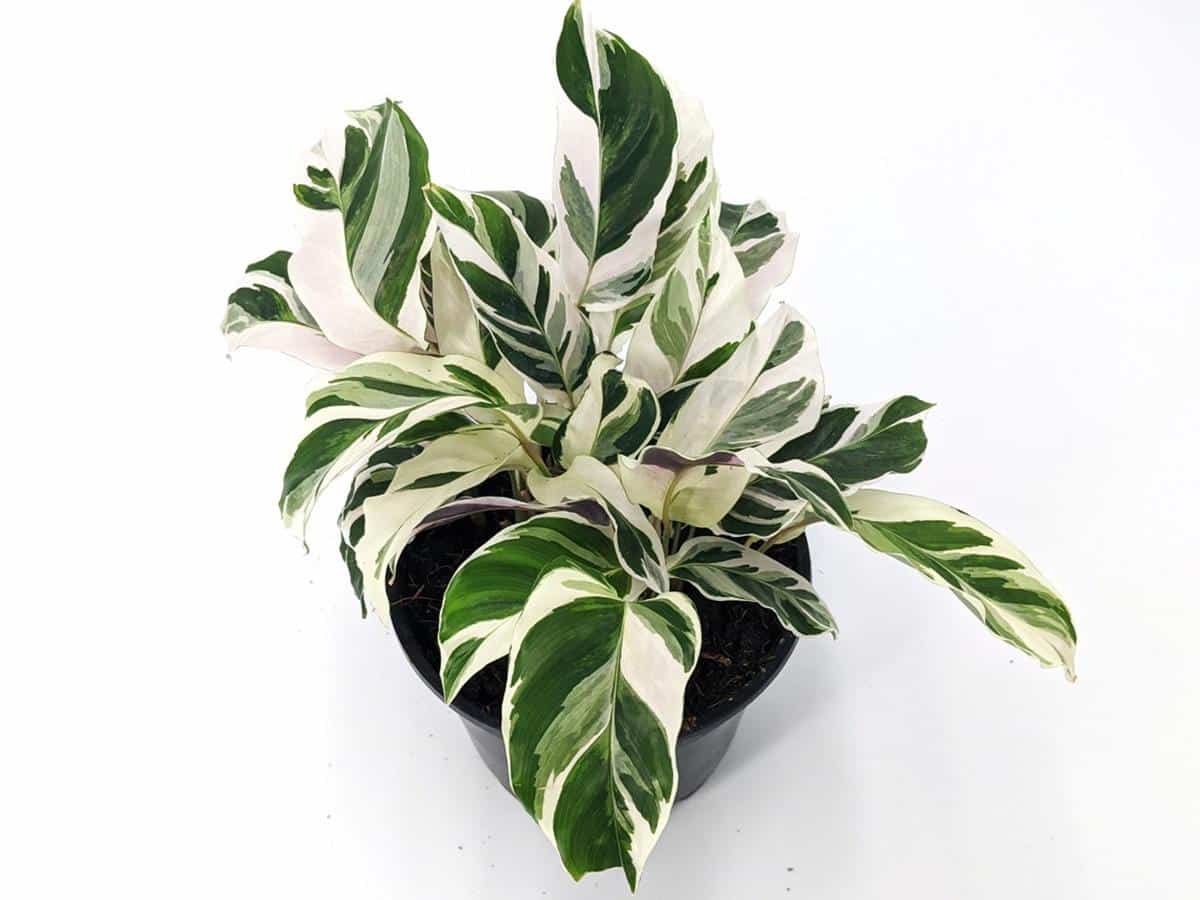
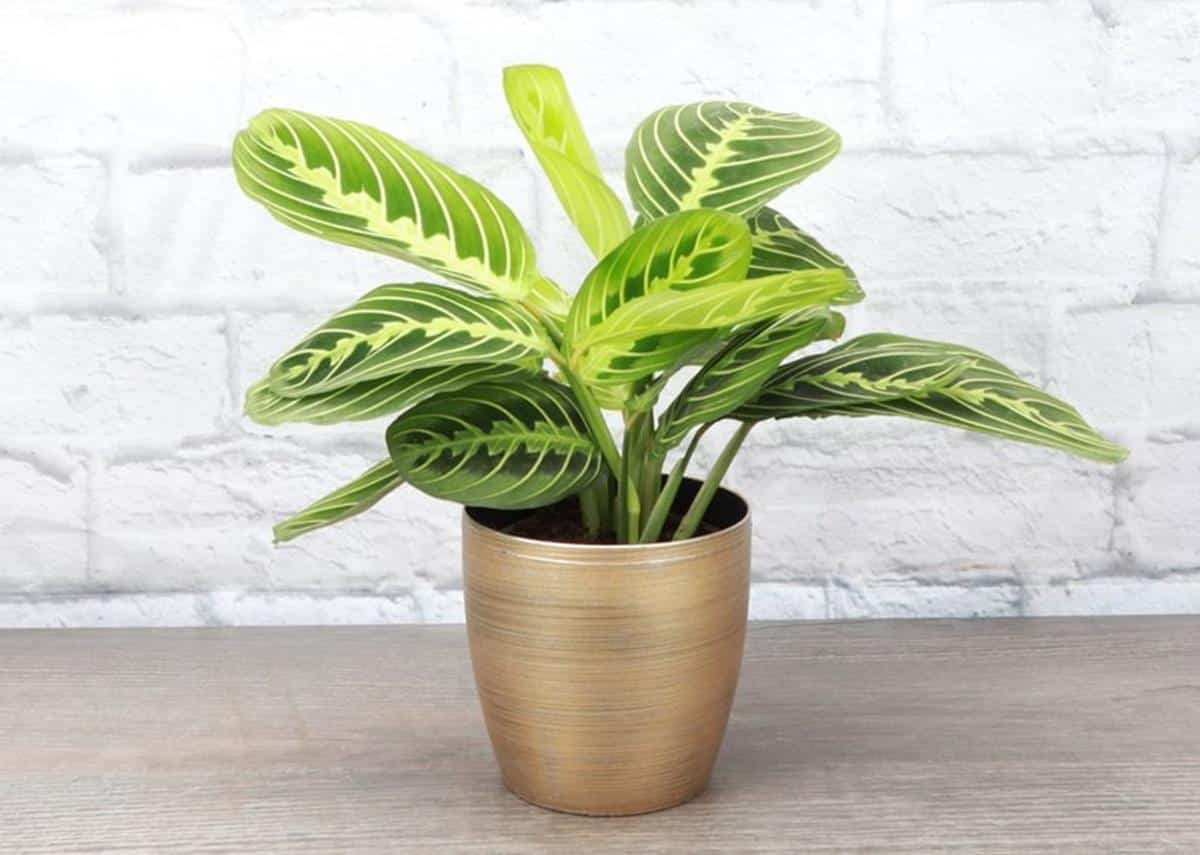
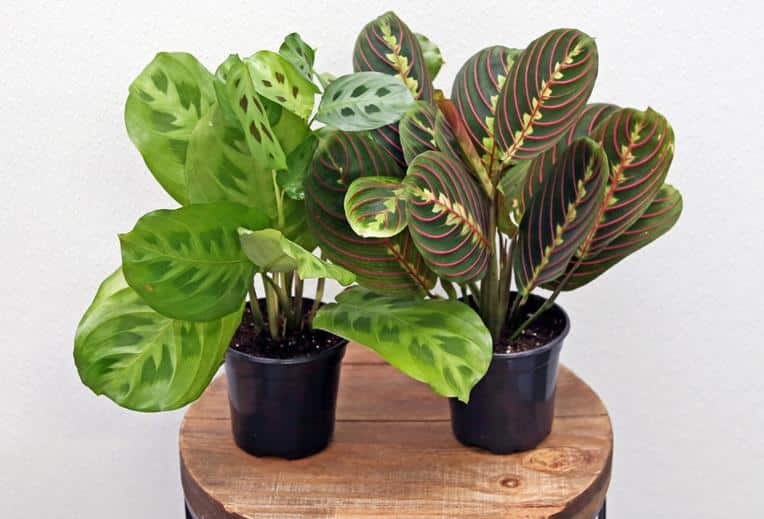
Leave a Reply